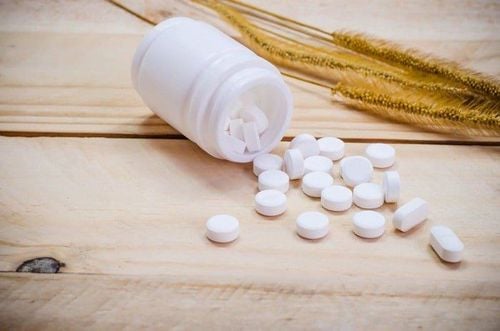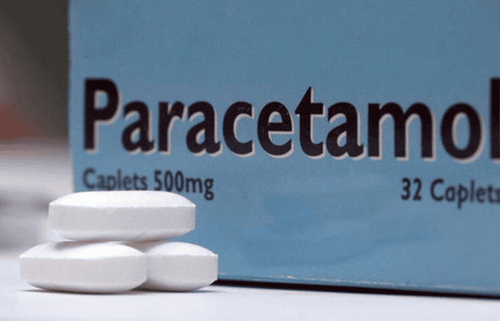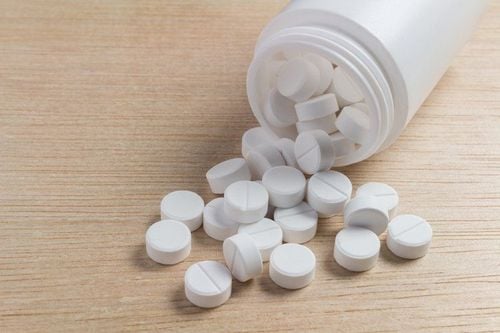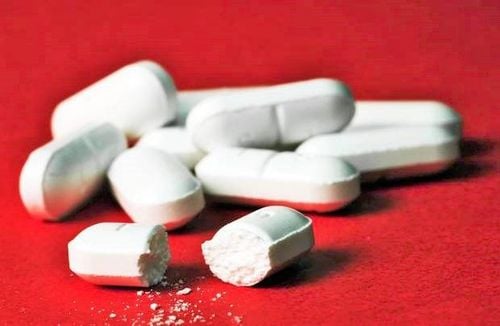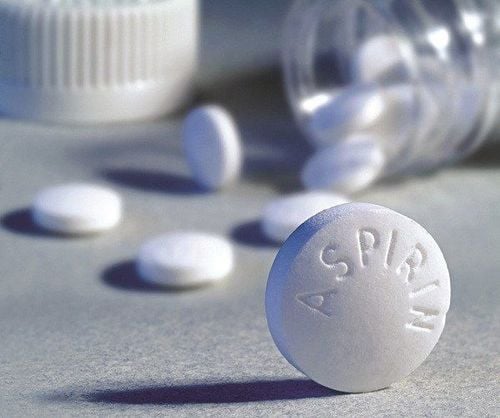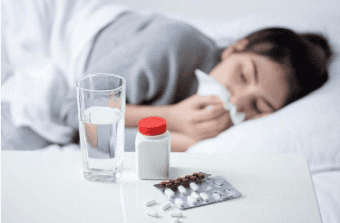This is an automatically translated article.
Acemol medicine has the main active ingredient Paracetamol and other excipients in a sufficient amount. This is a non-steroid antipyretic, analgesic and anti-inflammatory drug. The drug is effective in reducing pain and fever in all cases.1. What is Acemol?
Acemol medicine has the main active ingredient Paracetamol and other excipients in a sufficient amount. Acemol is usually made in the form of tablets. Packaging is a box of 40 tablets. Acemol is indicated in the treatment of pain relief and fever reduction in many cases.
Active ingredient Paracetamol is an active metabolite of Phenacetin, an effective analgesic and antipyretic that can replace Aspirin; However, unlike Aspirin, Paracetamol has no effect in the treatment of inflammation. At equal doses in grams, this active ingredient has analgesic and antipyretic effects similar to aspirin.
Active ingredient Paracetamol works to lower body temperature in patients with fever, but rarely lowers body temperature in normal people. The reason is that the drug acts on the hypothalamus to cause hypothermia, increased heat loss due to vasodilation and increased peripheral blood flow.
Acemol is rapidly and almost completely absorbed after oral administration. The drug is metabolised in the liver and excreted in the urine.
2. What does Acemol do?
Acemol is indicated for use with antipyretic and analgesic effects in the following cases: Colds, flu, hot fever accompanied by body aches.3. Usage and dosage of the drug Acemol
3.1. How to use the drug: Acemol is made in the form of tablets, suitable for oral use.
3.2. Treatment dose of the drug: You need to try to follow the instructions of the doctor, on average:
Treatment dose for adults: Each time take 1 to 2 tablets, 3 times a day or 4 hours apart. Therapeutic dose for children over 12 years old: 1 tablet each time, 2-3 times a day. Note: You should note that the above dosage is for reference only, as recommended by the manufacturer. The specific treatment dose depends on each person's health condition and disease progression. To get the right dose for your condition, you need to consult your treating doctor or medical professional.
4. In case of forgetting to take a dose of Acemol
In case of drug overdose: Paracetamol poisoning can be caused by using a single toxic dose, or by repeated ingestion of large doses of paracetamol (7.5 - 10 g in 1-2 days) or by taking the drug in a short period of time. long time. Dose-dependent hepatic necrosis is the most important acute toxic effect of overdose and can cause coma and even death.
Overdose handling: When you find out that someone has overdosed on Acemol, you need to take that person to a medical facility for timely intervention and the right regimen. The treating physician may have the following indications:
Gastric lavage (preferably within 4 hours of taking an overdose). The main detoxification therapy is the use of sulfhydry compounds. Treatment of overdose of active ingredient Paracetamol with N - acetylcysteine is more effective when the drug is given less than 10 hours after taking the preparation containing Paracetamol. In case of missed dose: Try to add the dose as soon as you remember. However, if the interval between taking the next dose is too short, skip the missed dose and resume the dosing schedule. Never use a double dose to make up for a missed dose.
5. Undesirable effects of the drug Acemol
When using Acemol, you may experience unwanted effects, as follows:
For the digestive system: Digestive disorders such as diarrhea or constipation. For the hematological system: Decreased neutrophil count, anemia, rarely thrombocytopenia. Other: Allergic, skin rash manifesting as erythema or urticaria, nephrotoxicity. When experiencing undesirable effects of Acemol, it is necessary to stop using it and notify the treating doctor or go to the nearest medical facility for proper treatment and limit harmful effects on health.
6. Acemol drug interactions
Concomitant use of Acemol with anticonvulsants such as phenytoin, carbamazepine, barbiturates or isoniazid increases hepatotoxicity.
Long-term use of Acemol with high doses of the active ingredient Paracetamol slightly increases the anticoagulant effect of coumarin and indandion derivatives. This effect is of little or no clinical importance, so Acemol is used when it is necessary to relieve mild pain or reduce fever in people being treated with Coumarin and Indandion derivatives.
7. Some notes when using Acemol
Before using Acemol you need to carefully read the instructions for use and refer to the information below.
7.1. Contraindications of Acemol: Acemol is contraindicated in the following cases:
People who are sensitive or hypersensitive to the active ingredient Paracetamol. People with glucose - 6 - phosphate dehydrogenase (G6PD) deficiency. 7.2. Caution when using Acemol: People with pre-existing anemia. People who have or have had impaired liver or kidney function. People who drink a lot of alcohol can increase the toxicity of the active ingredient Paracetamol to the liver. Physicians should warn users of the signs of serious skin reactions such as toxic epidermal necrolysis (TEN), acute generalized exanthematous pustulosis (AGEP), or Lyell's syndrome, or Lyell's syndrome. steven-johnson syndrome (SJS), . Ability to drive and use machines: Acemol does not affect the ability to drive and use machines Pregnancy: Acemol can be used in pregnant and lactating women. Lactation: Acemol can be used by pregnant and lactating women. In short, the drug Acemol has the effect of reducing pain, reducing fever, the user's understanding of the drug information helps the treatment process to be more effective.
Please dial HOTLINE for more information or register for an appointment HERE. Download MyVinmec app to make appointments faster and to manage your bookings easily.




